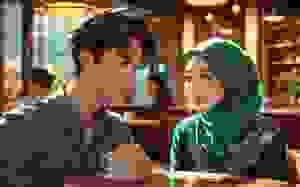Ai And Photojournalism Preserving The Legacy Of Images
AI and photojournalism are two rapidly evolving fields that are beginning to intersect in profound ways, shaking up the traditional landscape of visual storytelling. As artificial intelligence in photography advances, it brings both opportunities and challenges, specifically in the realms of credibility and archival preservation. Emmy award-winning visual storyteller Kira Pollack acknowledges the importance of understanding these changes, particularly how AI can help manage and safeguard the legacy of photojournalism. With the surge of misinformation and copyright issues facing photographers today, harnessing AI’s potential could aid in navigating these photojournalism challenges while also preserving invaluable archives of historical significance. In this new era, examining the impact of AI on journalism becomes crucial not only for evolving practices but also for ensuring the integrity and authenticity of the images that shape our understanding of the world.
The fusion of technology and visual journalism is leading to a groundbreaking transformation, often referred to as the era of intelligent imagery. This innovation, characterized by algorithms and digital tools, is redefining how we document and share poignant narratives from around the globe. Amidst the ongoing dialogue about the evolving nature of documentary photography, experts such as Kira Pollack champion initiatives to utilize these advanced technologies to enhance ethical storytelling. As we explore this intersection, it is essential to consider how AI can be strategically employed to address pressing concerns, including the challenges faced by photojournalists and the preservation of invaluable historical records. Understanding this dynamic landscape will be pivotal in shaping a future where authenticity remains at the forefront of visual communication.
The Intersection of AI and Photojournalism
Artificial Intelligence (AI) is revolutionizing various sectors, and photojournalism is no exception. The rise of AI technologies has brought forth both opportunities and challenges for photojournalists. On one hand, AI can enhance the storytelling aspect of photojournalism by providing tools that automate mundane tasks, allowing photographers to focus more on the art of capturing compelling images. For instance, AI algorithms can assist in sifting through vast archives, making it easier to catalog and retrieve images that tell important stories, thus preserving the legacy of photojournalism.
However, the integration of AI into photography also raises valid concerns regarding misinformation and the authenticity of images. With the ability of AI to generate highly realistic images, photojournalists must remain vigilant about maintaining the credibility of their work. The fear is that the prevalence of AI-generated content could lead to erosion of public trust in visual journalism, a cornerstone of the field. As photojournalists grapple with these developments, the conversation must focus on leveraging AI’s potential while safeguarding the core values of truth and integrity.
Preserving the Legacy of Photojournalism
As Kira Pollack emphasizes, the future of photojournalism hinges on recognizing the significance of archives. The vast majority of images taken by photojournalists remain unseen and unappreciated, a situation that presents a pressing challenge. AI has the potential to transform these archives from static collections into dynamic storytelling resources. Innovations such as intelligent tagging and context recognition can help unlock the narratives contained within these images, making them much more accessible to researchers, historians, and the public.
Moreover, the archival challenge also intersects with the ethical implications of AI usage in the field. There’s a delicate balance to strike; technology should be employed in a way that honors the work of photojournalists while providing them the tools to navigate an increasingly complex media landscape. The future may see AI acting as a steward of these visual histories, ensuring that photographers’ legacies are preserved and celebrated, rather than exploited or forgotten.
AI and the Future of Visual Truth
The conversation around AI’s impact on journalism is closely tied to the integrity of visual truth in reporting. In the current landscape, where misinformation spreads rapidly, the reliability of visual content is paramount. Kira Pollack’s work aims to ensure that AI can serve photojournalism by aiding in the preservation of authentic visual records, rather than contributing to the creation of misleading representations. By focusing on how AI can be harnessed ethically, Pollack advocates for a future where technology strengthens the foundation of journalistic integrity.
Furthermore, the challenge lies in educating both the public and industry insiders about the capabilities and limitations of AI technologies. While AI can analyze and categorize images with impressive accuracy, understanding its context and discerning nuances in complex scenarios, such as conflict photography, requires a human touch. Thus, the goal must be to develop AI tools that empower photojournalists rather than replace them, fostering a collaboration that upholds the truth at the heart of their work.
Addressing Ethical Concerns in AI Adoption
As AI continues to reshape the landscape of photojournalism, ethical dilemmas must be addressed head-on. Concerns about copyright infringement and unauthorized use of photographers’ work are paramount. The possibility of AI models being trained on copyrighted images without consent raises pressing questions surrounding authorship and ownership. It is crucial to establish clear guidelines that protect photojournalists’ rights while still enabling the beneficial use of AI in the industry.
Moreover, discussions about ethical AI use should extend to the implications for photojournalism’s credibility. The advent of generative AI brings forth a heightened risk of misleading visual content, which can further complicate the already challenging environment for journalists striving for accuracy. As AI tools are developed and integrated, it is essential to engage in multidisciplinary dialogues involving ethicists, technologists, and journalists to craft frameworks that safeguard both the rights of creators and the importance of truth in journalism.
Harnessing AI for Archival Solutions
One of the most promising applications of AI in photojournalism lies in its ability to enhance archival efforts. With a staggering amount of images taken over decades, much of which remains untouched, AI tools can revolutionize how these visual stories are cataloged and accessed. By using image recognition and advanced algorithms, AI can help identify and tag photographs based on content, context, and emotional tone, essentially bringing life back into dormant archives and making historical documents easier to navigate.
In practical terms, AI can assist photojournalists in preserving their legacy by creating searchable databases that prioritize visibility for underrepresented works. The ability to make historical images available to the public not only enriches the narratives surrounding pivotal moments but also emphasizes the vital role of photojournalists in documenting history. Thus, deploying AI thoughtfully can lead to a renaissance of appreciation for the rich visual history embedded within photojournalism.
AI’s Role in Identifying Misinformation
In an era where misinformation can proliferate as quickly as factual reporting, AI technology holds immense potential for photojournalism in combating this issue. Advanced AI algorithms can analyze photos, cross-reference them with established databases, and assess their authenticity, helping journalists and consumers discern fact from fiction. This capability serves as a powerful tool against the backdrop of viral images that often misrepresent the truth, underlining the need for continued vigilance and verification.
However, while AI tools can identify misleading content, they do not replace the critical eye of a seasoned photojournalist. The collaboration between AI technology and human expertise is essential to navigate the complexities of visual misinformation effectively. Establishing a trust-based relationship between these two elements can enhance the credibility of journalism as they work together to protect and preserve visual truth in reporting.
The Future of Photojournalism in AI Era
As the field of photojournalism evolves alongside the rise of AI technologies, the future holds both challenges and opportunities. Photojournalists must adapt to the rapid pace of innovation while maintaining their commitment to documenting truth and culture. The integration of AI can streamline workflows, grant access to previously unseen archives, and provide tools to enhance storytelling. However, the industry must also grapple with the ethical implications of these advancements.
Looking ahead, the focus will need to shift toward cultivating an environment where technology enhances rather than diminishes the human elements that underpin great journalism. By fostering an ongoing dialogue between photographers, technologists, and policymakers, there is the potential to create frameworks and systems that uphold the principles of photojournalism while embracing the possibilities that AI presents.
Collaborative Solutions for Ethical AI in Journalism
Creating a sustainable framework for integrating AI into photojournalism relies on collaboration across various disciplines. Engaging photojournalists in discussions with technologists, ethicists, and legal experts can lead to a robust understanding of the ethical concerns associated with AI. This interdisciplinary approach will foster solutions that respect the values of journalism while harnessing the innovative power of AI.
As photojournalists work to confront these challenges, they must continue to prioritize authentic storytelling. By working in tandem with AI technologies, they can better manage their archives and protect their intellectual property while ensuring the visual stories they tell remain rooted in accuracy and truth. Thus, the collaborative effort in addressing ethical AI usage in journalism is not merely about adaptation but about proactively shaping the future of visual storytelling.
The Need for Education in AI and Visual Storytelling
As the influence of AI expands in photojournalism, there is an increasing need for education on both technical skills and ethical considerations. Photojournalists must understand how AI can be utilized not just as a tool for enhancement but also how it poses challenges to their practice. Workshops, seminars, and courses that address the intersection of AI and visual storytelling can equip photographers with the necessary skills to navigate this evolving landscape.
Moreover, as AI tools gain prominence, educating the public on the implications for visual literacy becomes equally important. Understanding how to critically engage with visual content in an era of AI-generated images will empower audiences to distinguish between authentic journalism and artificial fabrication. By prioritizing education for both creators and consumers, the future of photojournalism can maintain its commitment to truth and integrity in storytelling.
Frequently Asked Questions
How is artificial intelligence in photography impacting photojournalism today?
Artificial intelligence in photography is significantly impacting photojournalism by introducing both challenges and opportunities. While AI poses threats such as misinformation and copyright issues, it also offers innovative ways to preserve archives and enhance storytelling. Photojournalists can harness AI tools to catalog and organize vast collections of images, ensuring the legacy of their work is maintained and accessible.
What are the challenges of photojournalism in the age of AI?
Photojournalism faces several challenges in the age of AI, including the potential for misinformation through generated images and ethical concerns surrounding copyright and authorship. The rise of AI tools complicates the traditional understanding of photography, as photojournalists must navigate the balance between leveraging technology for archival purposes while ensuring the integrity and authenticity of their work.
In what ways can AI help preserve the legacy of photojournalism?
AI can help preserve the legacy of photojournalism by providing advanced tools for cataloging and organizing extensive archives of images. By analyzing and contextualizing photos, AI can make seldom-seen historical works more accessible, ultimately contributing to the ongoing visual record of significant events and fostering a deeper understanding of their complexities.
What role does AI play in addressing the visual history of photojournalism?
AI plays a crucial role in addressing the visual history of photojournalism by enabling more effective preservation and organization of archives. Through AI-driven analysis, photojournalists can extract meaningful insights from their images, helping to contextualize stories and reinforce the visual truth that lies within their photographic work.
How can AI enhance storytelling in photojournalism without compromising integrity?
AI can enhance storytelling in photojournalism by extracting detailed information from images, enriching the narratives behind the photos. This use of AI maintains integrity by focusing on providing context, depth, and authorship, rather than generating misleading or fabricated content, thus reinforcing the core values of truth and memory in journalism.
Key Points
Details
AI’s Impact on Photography
AI presents both threats and opportunities for photojournalism, from copyright concerns to misinformation.
Kira Pollack’s Vision
Pollack aims to leverage AI to preserve photojournalistic archives and enhance their discoverability.
Challenges in Photojournalism
The challenge includes the safe preservation of vast archives and the need to contextualize these images ethically.
Case Studies with AI
Experiments show AI’s ability to analyze and provide insights on conflict photography.
Trust and Authenticity
Generative AI creates real concerns about trust in photography and the risk of unauthorized use of images.
Future Aspirations
Pollack hopes to engage in dialogue across disciplines to better understand AI’s implications for journalism.
Summary
AI and photojournalism are at a crossroads, as this technology showcases both potential benefits and significant threats to the integrity of the field. While AI’s ability to generate images raises concerns about authenticity and copyright issues, its application in preserving photographic archives could transform how we document history. The conversation surrounding AI’s impact on the photojournalism landscape is crucial as it explores the balance between innovation and preservation, ensuring the legacy of visual storytelling endures.
The post AI and Photojournalism: Preserving the Legacy of Images appeared first on tv3malaysia.net.
Artikel ini hanyalah simpanan cache dari url asal penulis yang berkebarangkalian sudah terlalu lama atau sudah dibuang :
http://tv3malaysia.net/culture/ai-and-photojournalism-preserving-the-legacy-of-images
 PING BABAB : Raksasa Aggregator Malaysia
PING BABAB : Raksasa Aggregator Malaysia



























